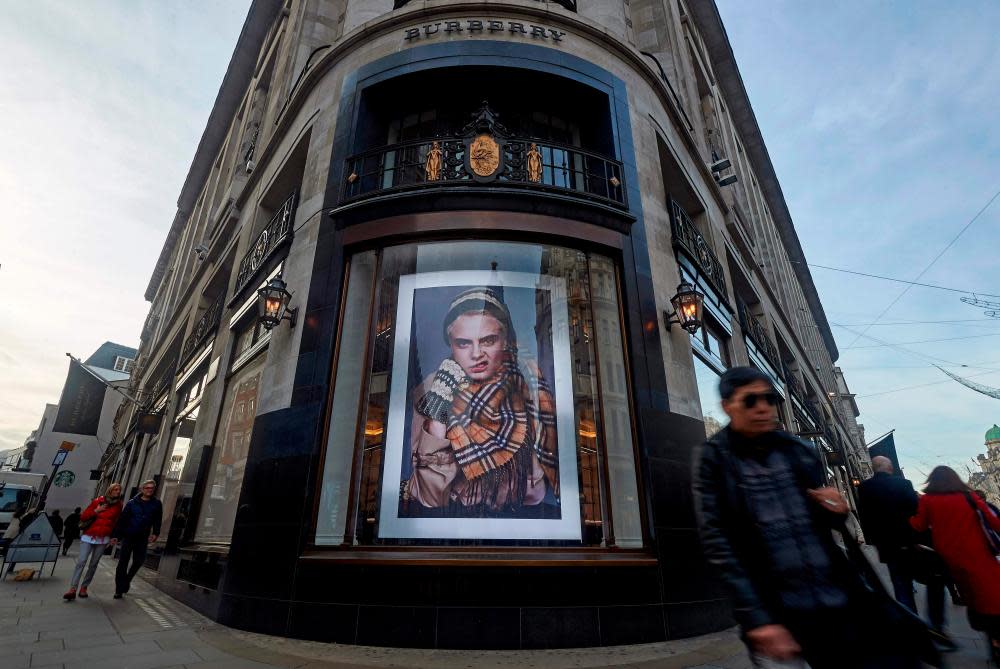Burberry’s bonfire of the vanities is brazen and ecologically reckless

There are many burning issues with sustainability in the fashion industry, as we know. It seems the British heritage brand Burberry has sought to make these crises literal, by burning more than £28m worth of surplus fashion and cosmetic products. An eagle-eyed reader ploughing through Burberry’s 2017/18 annual report noticed a statistic for “finished goods physically destroyed during the year”. Perhaps Burberry should be applauded for its transparency, but praise has been drowned out by the ensuing furore.
In social media parlance “many people aren’t liking” what Burberry has done. But then incinerating high-end goods that most people would kill for was bound to look like an obscene bonfire of vanity. According to reports it has even riled shareholders, with at least one protesting that they don’t understand why they weren’t given the opportunity to buy up the stock first.
You can see why they might be spooked. On one hand Burberry is very a sophisticated company. FTSE 100-registered, it has made a concerted effort to move away from its trademark check design (leading to the charge of snobbery) to occupy a position that is high-end, even for luxury. Behind the scenes, top jobs are increasingly being filled by non-fashion executives from the medical, consumer goods and media sectors – Jeremy Darroch, the chief executive of Sky, is an independent director, for example. For such a sophisticated global company to be managing the supply chain by literally burning stuff is shocking.
Fashion theory tells us there are 101 processes that go into making a garment, from harvesting plants for raw fibre, to the processing and finishing of textile yarns involving thousands of litres of water. There are hundreds of hours of human labour too. Similarly, high-end cosmetics are a drain on resources in terms of both raw ingredients from the natural world and processing. To input all of these resources and then to squander them by burning (recovering only a tiny proportion of that energy) is pure madness given the backdrop of ecological emergency that we face.
Yet, Burberry seems brazen in its defence. It has argued that it had to burn unsold stock in order to avoid the precious brand being tarnished by the “grey market” (where items are discounted). It is true that they are far from alone. Fast-fashion brand H&M has been accused of incinerating unsold stock, and admits to burning faulty stock in a power station in Sweden. Increasingly brands are trying to style out incineration, pointing to the fact that burning textiles releases energy and helps power plants move away from fossil fuels. Please.
Notably, Burberry and H&M are both core brands committed to Making Fashion Circular, an initiative driven by the Ellen MacArthur Foundation. This campaign, announced with fanfare at the Copenhagen fashion summit earlier this year, is all about transforming the garments ector into one where waste is designed out, and materials flow in a circular economy system, constantly reused in order to benefit business, society and the environment. If you cremate the clothes, that’s clearly not possible.
Ultimately it comes down to responsibility. Burberry has driven a new cycle of see-now, buy-now consumption where consumers can buy straight from the catwalk. That involves walking a tightrope when it comes to ordering. Buy too little and you miss out on sales, too much and you’re left holding high-fashion stock. But that’s the risk and they need to own it, not burn their way out of it.
Many years ago I remember distinctly that the east London label House of Jazz had a problem in production with shoes. Did they burn them and claw back some tax on unused imports? No, they left the pairs of shoes lined up outside their workshop, and anyone who wanted them – which included some homeless people, students on low income and even my friend’s nana – helped themselves to a pair of new season shoes (with scarcely detectable faults) and wore them about the place for a long time to come. OK, so House of Jazz went bust not long after, but I’ll always maintain that that human, warm-hearted response to a production mistake represents the true essence of a British luxury brand.
• Lucy Siegle is a freelance journalist focusing on ethical living

 Yahoo News
Yahoo News 
